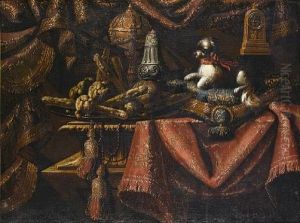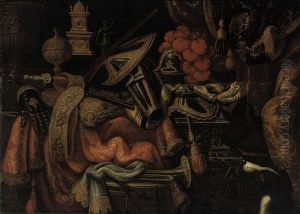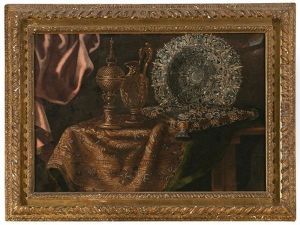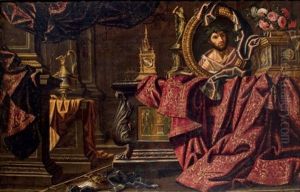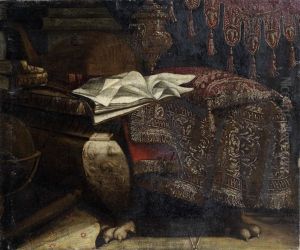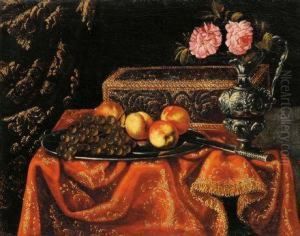Antonio Tibaldi Paintings
Antonio Tibaldi, also known as Antonio da Reggio or Antonio da Correggio, was an Italian painter and architect who made significant contributions to the Baroque style in art. Born around 1582 in Reggio Emilia, Italy, he belonged to a period of great artistic flourishing that saw the emergence of many influential artists and architects. Not to be confused with the more famous Antonio Allegri da Correggio, an Italian Renaissance painter, Antonio Tibaldi's career spanned the late Renaissance and early Baroque periods, where he primarily worked in his homeland and occasionally in other parts of Italy.
Antonio Tibaldi's artistic journey began in his hometown, where he was initially influenced by local artistic trends. However, as the Baroque style became prevalent throughout Italy, Tibaldi's works began to reflect the drama, movement, and emotional intensity characteristic of the Baroque. While there is limited documentation about his life, it is known that he was active during the early 17th century and his works included both painting and architectural projects.
The exact details of Tibaldi's training are not well-documented, but he likely received his artistic education in the workshops of established painters of the time, which was the standard practice for aspiring artists. He then went on to develop his own style, which integrated the dynamic qualities of Baroque art with the classical balance and harmony he would have studied during his formative years. Tibaldi's artistry was expressed through his use of dramatic lighting, rich colors, and a masterful depiction of the human form.
Throughout his career, Tibaldi worked on numerous commissions for religious institutions, as the Church was a major patron of the arts during this period. His works included altarpieces, frescoes, and other religious-themed paintings meant to inspire devotion among the faithful. These works were designed not only to decorate religious spaces but also to serve as visual sermons that communicated religious narratives to a largely illiterate populace.
Despite his accomplishments, Antonio Tibaldi is not as widely recognized today as some of his contemporaries. This is perhaps due to the scarcity of surviving works that can be definitively attributed to him or the overshadowing presence of other prominent figures of the Baroque era. Nevertheless, his contributions to the artistic landscape of the 17th century were significant in their own right, and they reflect the broader cultural and aesthetic shifts that were taking place in Italy at the time.
Antonio Tibaldi passed away in 1657, leaving behind a modest but important legacy that offers insight into the development of Baroque art in Northern Italy. While specific details of his life and work may remain obscure, his influence persists in the study of Italian Baroque painting and architecture.



